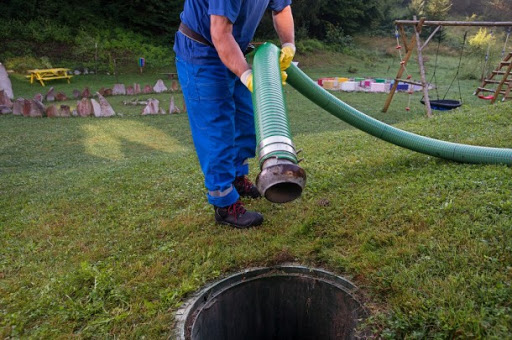
Septic system maintenance is not complicated, and it doesn’t have to be costly. Upkeep comes down to 4 key elements:
The typical household septic system should be inspected at least every 3 years by a septic service professional. Household septic tanks are typically pumped every 3 to 5 years. Alternative systems with electrical float switches, pumps, and mechanical components should be inspected much more often, usually once a year. A service contract is actually important since alternative systems have mechanized parts.
Click here to get the best Septic Tank Pumping.
4 major factors influence the frequency of septic pumping:
Home size
Total wastewater generated
The volume of solids in wastewater
Septic tank size
Service provider coming? Here’s what you have to know.
When you call a septic service provider, he or she will inspect for leaks and examine the scum and sludge layers in the septic tank.
Keep maintenance records on work performed on the septic system of yours.
The septic tank of yours includes a T-shaped outlet that prevents scum and sludge from leaving the tank and traveling to the drain field area. If the bottom of the scum layer is actually within 6 inches of the bottom of the outlet, or even if the top of the sludge layer is actually within twelve inches of the outlet, your tank must be pumped.
To keep track of when to pump out the tank of yours, write down the sludge and scum levels found by the septic professional.
The service provider should note repairs completed and the tank condition in your system’s service report. If other repairs are actually recommended, hire a repair person soon.
The National Onsite Wastewater Recycling Association (NOWRA) has a septic locator that makes it very easy to find service professionals in the area of yours.
Use Water Efficiently
The average indoor water use in a typical single-family home is nearly seventy gallons per individual each day. Only a single leaky or perhaps running toilet can waste almost as 200 gallons of water each day.
All the water a household sends down its pipes winds up in its septic system. The greater number of water a household conserves, the less water enters the septic system. Efficient water use improves the operation of a septic system and also reduces the risk of failure.
EPA’s WaterSense program has many simple ways to avoid wasting water-efficient products and water.
High-efficiency toilets.
Toilet use accounts for twenty-five to thirty % of household water consumption. Many older homes have toilets with 3.5 to 5-gallon reservoirs, while newer, high-efficiency toilets use 1.6 gallons of water or perhaps less per flush. Replacing existing toilets with high-efficiency models is actually a simple way to minimize the amount of household water entering the septic system.
High-Efficiency showerheads and faucet aerators.
Faucet aerators, high-efficiency showerheads, and shower flow restrictors help reduce the volume and water use of water entering the septic system of yours.
Washing machines.
Washing small loads of laundry on your washing machine’s large load cycle wastes energy and water. By selecting the correct load size, you are going to reduce water waste. If you’re not able to select load size, run only full loads of laundry.
Make an effort to spread washing machine use throughout the week. Doing all household laundry in 1 day might seem like a time-saver; but it can damage the septic system of yours, not allow your septic tank enough time to deal with waste, and can flood your drain field
Clothes washers that bear the ENERGY STAR label use thirty-five % less energy and fifty % less water than standard models. Some other Energy Star appliances provide significant energy and water savings.
Properly Dispose of Waste Whether you flush it down the toilet, grind it in the garbage disposal, or perhaps pour it down the sink, shower, and bath, everything that goes down your drains ends up in the septic system of yours. What goes down the drain affects how well the septic system of yours works.
Toilets are not trash cans!
The septic system of yours isn’t a garbage can. A simple rule of thumb: Don’t flush anything besides human waste and toilet paper. Never flush:
Cooking grease or perhaps oil
Non-flushable wipes, like baby wipes or perhaps other wet wipes
Photographic solutions
Feminine hygiene products
Condoms
Dental floss
Diapers
Cigarette butts
Coffee grounds
Cat litter
Paper towels
Pharmaceuticals
Household chemicals as paint, antifreeze, pesticides, oil, or gasoline, or perhaps paint thinners
Believe at the sink!
The septic system of yours has a set of living organisms that digest and treat household waste. Pouring toxins down the drain can kill these organisms and harm the septic system of yours. Whether you’re at the kitchen sink, bathtub, or perhaps utility sink:
Stay away from chemical drain openers for a clogged drain. Rather, use boiling water or even a drain snake.
Never pour cooking oil or perhaps grease down the drain.
Never pour oil-based paints, solvents, and huge volumes of toxic cleaners down the drain. Even latex paint waste should be minimized.
Eliminate or even control the use of garbage disposal. This will significantly lower the number of fats, grease, and solids that enter the septic tank yours and ultimately clog its drain field.
Click here to contact the best septic services in Durham, NC
